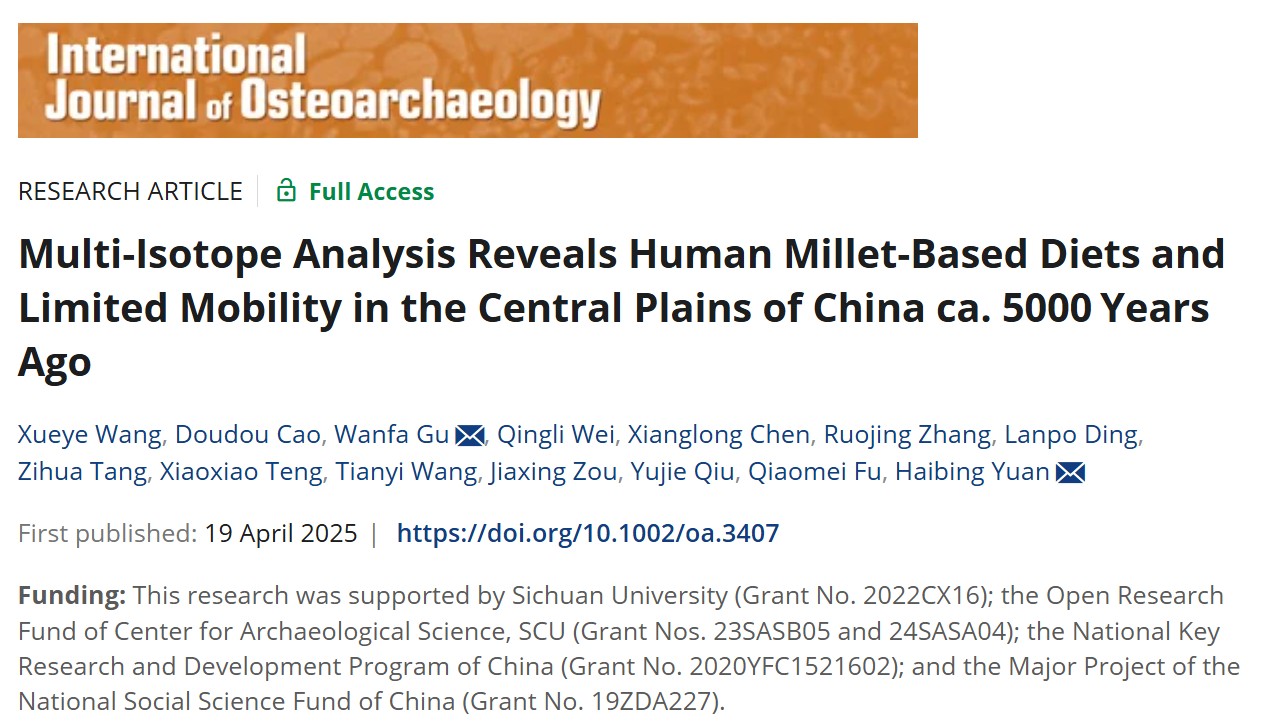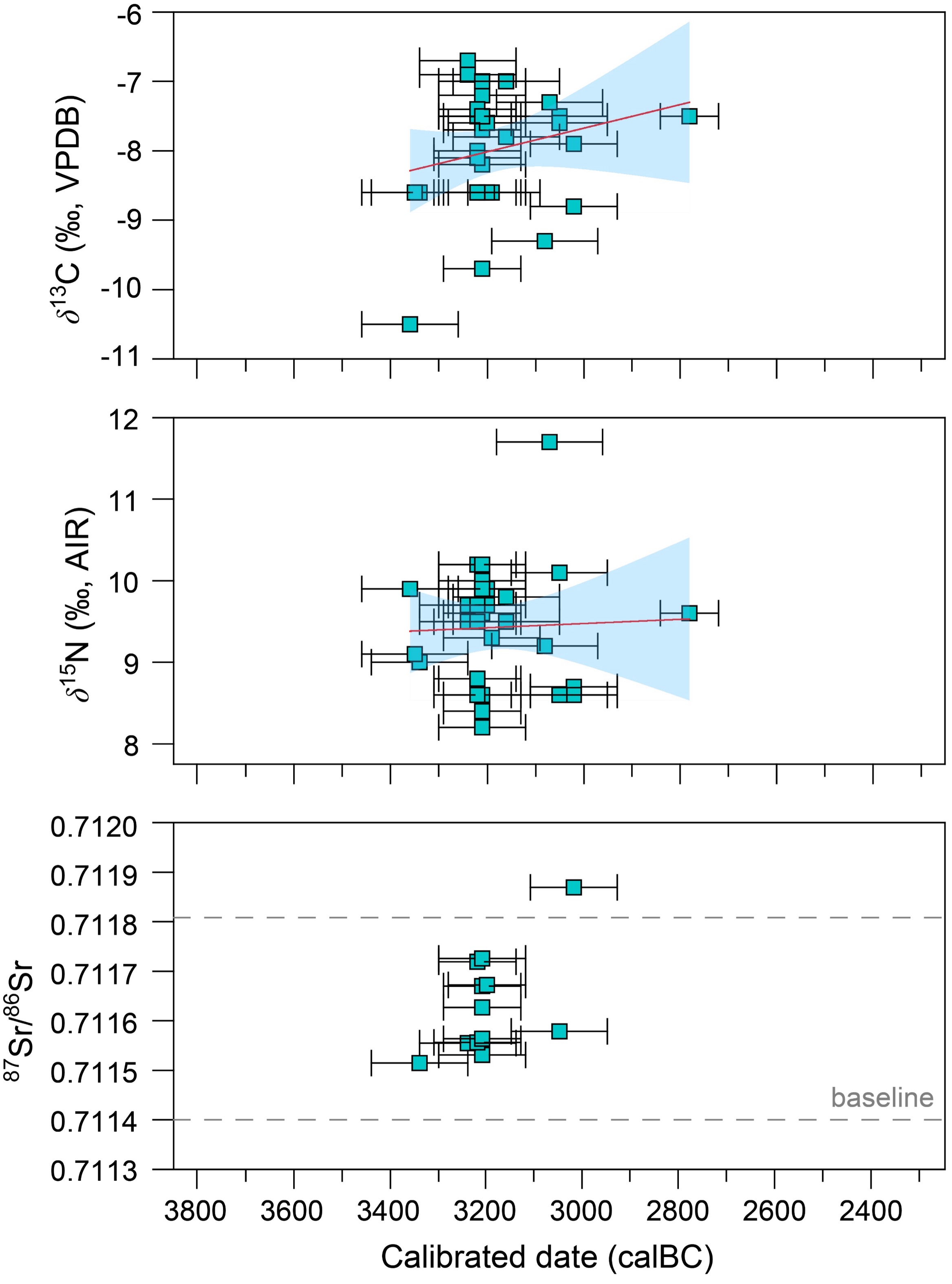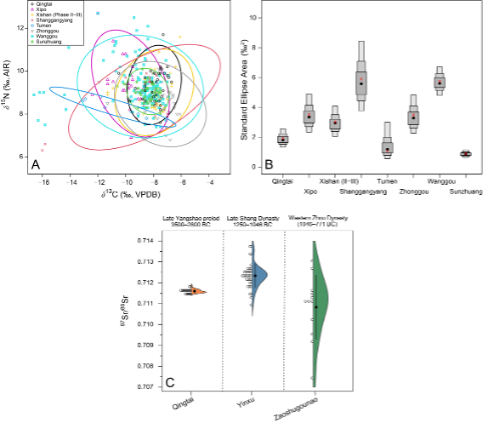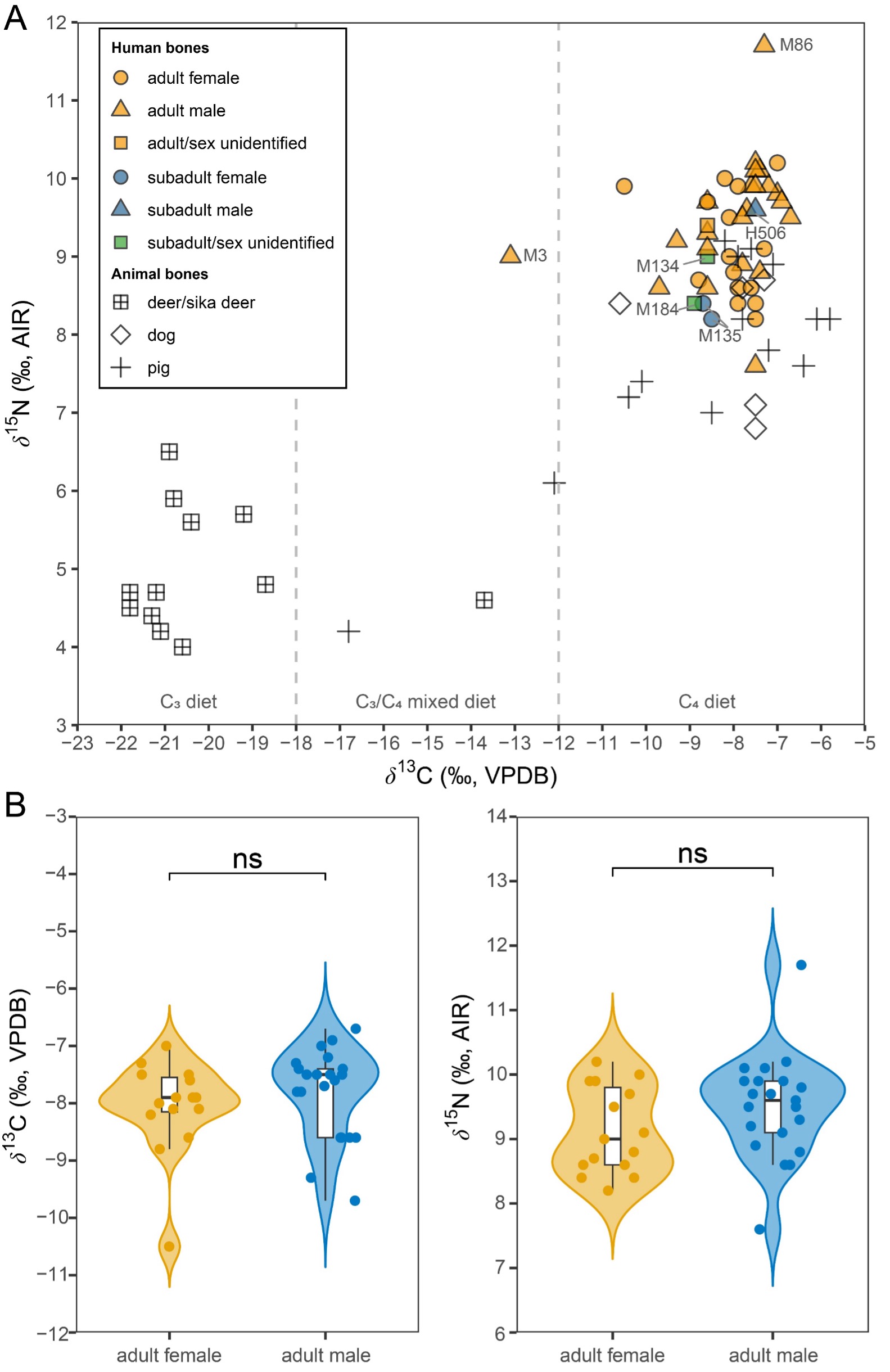New progress in the study of livelihood and migration patterns of the Central Plains population 5,000 years ago
Recently, the Center for Archaeological Science of Sichuan University, in collaboration with the Zhengzhou Municipal Institute of Cultural Heritage and Archaeology and other institutions, published research findings titled “Multi-isotope analysis reveals human millet-based diets and limited mobility in the Central Plains of China ca. 5000 Years Ago” in the international journal *International Journal ofOsteoarchaeology*. The first author of the paper is Special Associate Researcher Wang Xueye, and Researcher Gu Wanfa from the Zhengzhou Municipal Institute of Cultural Heritage and Archaeologyand Associate Professor Yuan Haibing from the Center for Archaeological Science, Sichuan University are the corresponding authors. Co-authors include Cao Doudou from the University of Cambridge; Wei Qingli and Ding Lanpo from the Zhengzhou Municipal Institute of Cultural Heritage and Archaeology; Chen Xianglong from the Chinese Academy of Social Sciences; Tang Zihua from the Institute of Geology and Geophysics, Chinese Academy of Sciences; Teng Xiaoxiao from Nanjing Normal University; Wang Tianyi and Fu Qiaomei from the Institute of Vertebrate Paleontology and Paleoanthropology, Chinese Academy of Sciences; and Zhang Ruojing, Zou Jiaxing, and Qiu Yujie from the School of Archaeology and Museology, Sichuan University.

The Yangshao culture (ca. 5000-2800 BC) is one of the most important archaeological cultures in China's prehistoric period, characterized by rich material culture representations, settlement patterns, etc., allowing observation of long-term social structural changes, cultural development processes, and the degree of civilization development in the Central Plains. Research indicates that around the late Yangshao period (ca. 3300-2800 BC), a significant cultural transformation occurred in the Central Plains. It no longer continued the cultural uniformity demonstrated during the Miaodigou culture period, showing phenomena of intensified regional cultural differentiation, uneven regional cultural development, and strong impacts from external cultures. Against this backdrop, exploring the impact of late Yangshao population activity patterns, subsistence mode transitions, and population migration activities on the overall pattern from a multidisciplinary perspective becomes particularly necessary.
Overall, the stable millet-based agricultural system of the Yangshao culture supported population expansion in late Yangshao society over the long term, but current academic understanding of the scale, patterns, and characteristics of population migration during this period is extremely limited. This study focuses on human skeletal remains from the large moated settlement site of Qingtai in Xingyang, Zhengzhou, Henan, dating to the late Yangshao period. It analyzes carbon and nitrogen stable isotopes from bone collagen in 54 individuals and strontium isotopes from tooth enamel in 38 individuals. Combined with radiocarbon dating results from human bones, the study reconstructs the dietary structure and migration patterns of the population during the late Yangshao period with high temporal resolution.

Figure 1: Analysis of carbon and nitrogen stable isotopes in humans and animals, and sex differences at the Qingtai site
Carbon and nitrogen stable isotope studies indicate that the early inhabitants of the Yangshao culture at the Qingtai site had a diet primarily based on millet-type foods, supplemented by a certain proportion of animal protein. Combined stable isotope analysis and zooarchaeological research suggest that domestic pigs were the main source of animal protein for these ancient people (see Figure 1A). There were no significant dietary differences between males and females, nor were there differences based on age groups or life cycle stages, reflecting a highly consistent subsistence pattern (see Figure 1B). Compared to the complex and diverse dietary structures observed in multiple large settlement units in the Central Plains during the middle and late Yangshao period (such as the Wanggou and Shanggangyang sites), the SIBER isotope niche model for the Qingtai population shows a significantly smaller dietary niche breadth compared to most other contemporary large or small settlement populations (see Figures 2A and 2B).

Figure 2: Comparative study of the Qingtai site population with other settlement populations
A.Distribution map of carbon and nitrogen stable isotope niches for the late Yangshao population in the Zhengzhou-Luoyang area
B. Comparison chart of Bayesian standard ellipse areas for the dietary niches of the late Yangshao population in the Zhengzhou-Luoyang area
C. Comparison chart of strontium isotopes for the Qingtai population and populations from other periods
Strontium isotope research indicates that the strontium isotope ratios of almost all individuals fall within the range of locally available bioresources, revealing a migration pattern characterized by local settlement, concentrated activities, and extremely low mobility for the Qingtai population. Compared to the migration patterns indicated by strontium isotopes for populations from the late Shang period Yinxu site and the pre-Zhou and Western Zhou period Zaoshugounao site, the concentrated distribution of data for the Qingtai population further reinforces their characteristic of stable settlement (see Figure 2C).

Figure 3: Diachronic trend chart of multi-isotope data for the Qingtai site population
Integrating the above analyses and studies such as radiocarbon dating, it is evident that the Yangshao culture population at the Qingtai site maintained a stable millet-based agricultural subsistence mode and local settlement characteristics over a span of approximately 600 years (see Figure 3). Therefore, it can be seen that during the late Yangshao period, the highly developed and stable millet agriculture system in the Central Plains provided the Qingtai population with sufficient and reliable food supplies and dietary sources, reflecting long-term, stable cultural characteristics. This food supply model likely enhanced the Yangshao population's ability to withstand impacts from external cultures, environmental changes, and other factors. The stable local subsistence economy promoted population growth, settlement expansion, and the process of social complexification, laying the demographic and material foundation for the formation of early state forms in the Central Plains.
This research was supported by the National Key R&D Program of China (2020YFC1521602), the National Social Science Fund of China Major Project (19ZDA227), the Sichuan University "From 0 to 1" Innovation Research Project (2022CX16), and open research grants from the Center for Archaeological Science, Sichuan University (23SASB05 and 24SASA04), among others.
